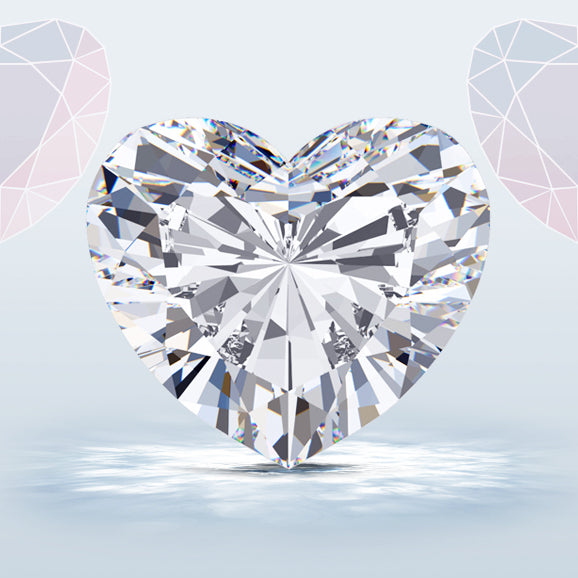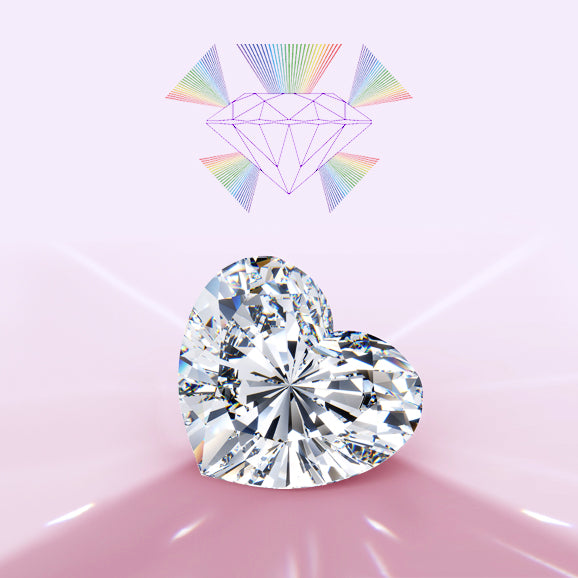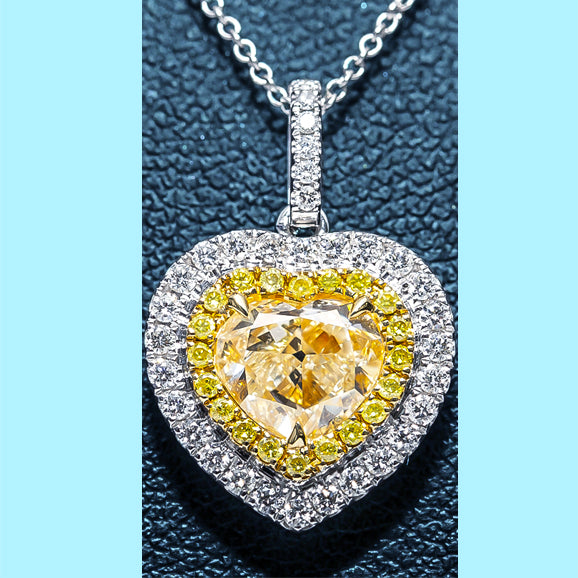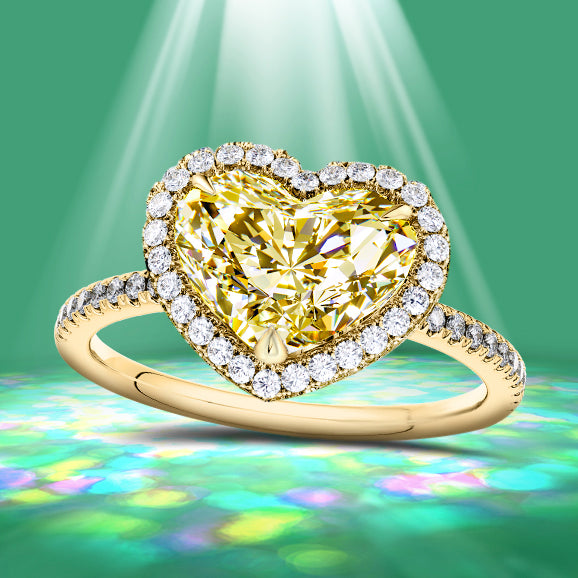
Heart Shaped Diamonds Explained
Heart-shaped diamonds are, as their name suggests, diamonds cut into a fancy heart shape.
The most popular use for heart-shaped diamonds in pendants but can look stunning as an engagement ring.
Cutting a well-proportioned heart shape required a high degree of skill. Many diamond cutters are unable to create a good-looking heart cut. You must check the individual stone, either in person or with high-quality images and video, before committing to a purchase.

Heart-Shaped Diamonds – A Complex Gem
Heart-shaped diamonds are a real test of the diamond cutter's skill. The complex shape with its two lobes, curved sides and a notch at the top is only successful if the cutter can make the classic heart shape and still retain the sparkle and fire that buyers expect from a brilliant-cut diamond.
Many heart-shaped diamonds lack the left to right symmetry that makes the shape pleasing to look at. Every part of the shape needs to be in balance for the effect to work well. The facets need to be carefully cut to retain the sparkle of the gem. Every part of the cut needs to be carefully calculated and cut with precise care.
The complexity of the heart shape means that size matters. A diamond that is not large enough will not show the heart shape clearly; it will tend to look round. For best visual effect, choose a diamond that has a minimum of 2 carats weight.
From 2 carats upward, there is enough material in the gem to give a stunning visual appearance. If budget permits, consider a pink coloured diamond, or, at an even higher cost, a red diamond. Either of these colours will make for striking pieces of jewellery and complete the romantic associations of the heart shape.

The Anatomy Of A Heart
Heart-shaped diamonds are a modification of the popular round cut diamond with 59 facets.
A beautiful heart-shaped diamond must have several features correctly implemented, the most important being that the left and right side must be identical. The smallest variance can be readily seen, especially in larger gems.
The cleft of the diamond should be well defined, and the wings at the sides of the diamond need to be slightly rounded. To straight or too curved will look 'off' to any viewer, even if they cannot immediately recognise the fault.
Unlike most other diamond shapes, there is not a single silhouette that is considered ideal; the choice of shape is a matter of personal taste.

Although the taste of the buyer is vital in the selection of the stone for a piece of jewellery, some guidelines are accepted as producing the most attractive stones.
- Ideal length to width ratio is about 1.00, meaning that the length and width should be approximately the same. Pendants tend to be preferred with a slightly longer shape (1.05 -1.15), and rings are often preferred to be slightly wider (0.85- 1.00).
- Clarity of the diamond should be a minimum of 'SI2’.
- Colour should be graded as a minimum of 'G’
- Cut quality should be graded as a minimum of 'Good'.
- The depth should be between 53% to 62%
- The table (large flat facet at the top of the gem) should be between 51% and 63%.
- The girdle running around the diamond should be very thin to slightly thick. Too thin a girdle will lead to a gem that is liable to be easily damaged. If the girdle is too thick, the diamond will look relatively small for its carat weight.
- More than most other diamond shapes, the grading report does not give the whole picture as to the appearance of the gem. The final choice of a heart-shaped diamond needs to be made as the result of close inspection, either in-person or using high-quality images.

Choose The Right Setting
The complex shape of a heart needs a setting with a minimum of four prongs to keep the diamond firmly in place and an additional prong to protect the tip. Diamonds smaller than half a carat need fewer prongs because too much metal can overwhelm the diamond; in this case, use a 3-prong setting with a v-tip to
protect the point.
An attractive alternative setting, for larger gems, is a bezel setting where the gem is held in place by a continuous band of metal running around the entire stone.
A good-sized diamond can look very good as a solitaire; however, a halo of smaller diamonds surrounding the centre diamond can create the effect of a larger stone at a lower cost. The halo softens the appearance of the diamonds while increasing the sparkle.
The colour of the metal used as the setting can be chosen to flatter the colour of the diamond. If a warmer finish is required, then choose a slightly yellow stone, with a lower colour grade and match it with a yellow or rose gold setting. If a whiter finish is the choice, then a white metal setting will enhance the whiteness of any colour grade you choose.

Heart-Shaped Diamond Engagement Rings
A heart-shaped diamond engagement ring is an ideal way to link the symbolism of the heart and the emotions of love related to an engagement. Although round diamonds remain the most popular choice for an engagement ring, heart shapes are gaining in popularity. The symbolism tells a compelling story that is sure to be appreciated by anyone receiving such a ring.